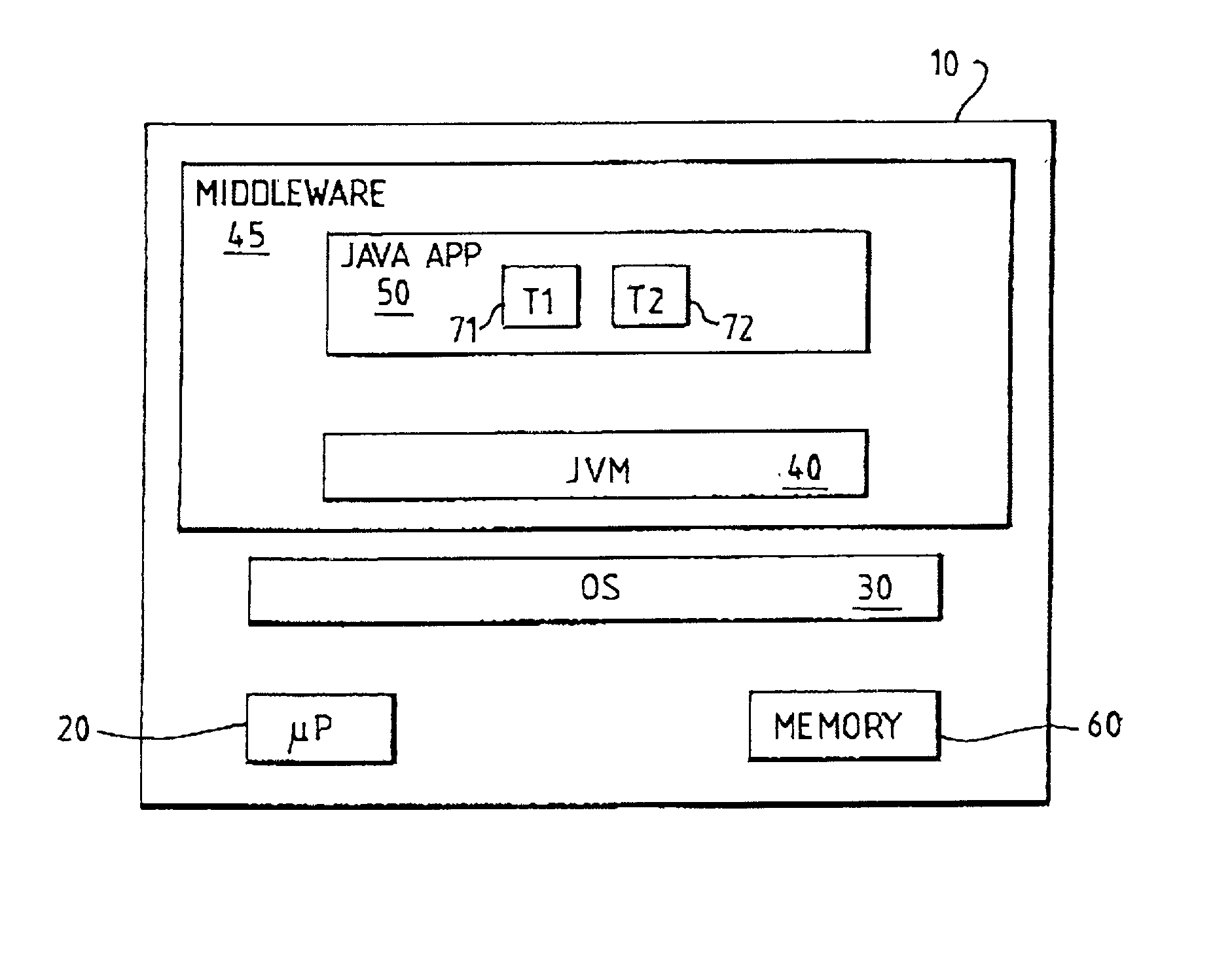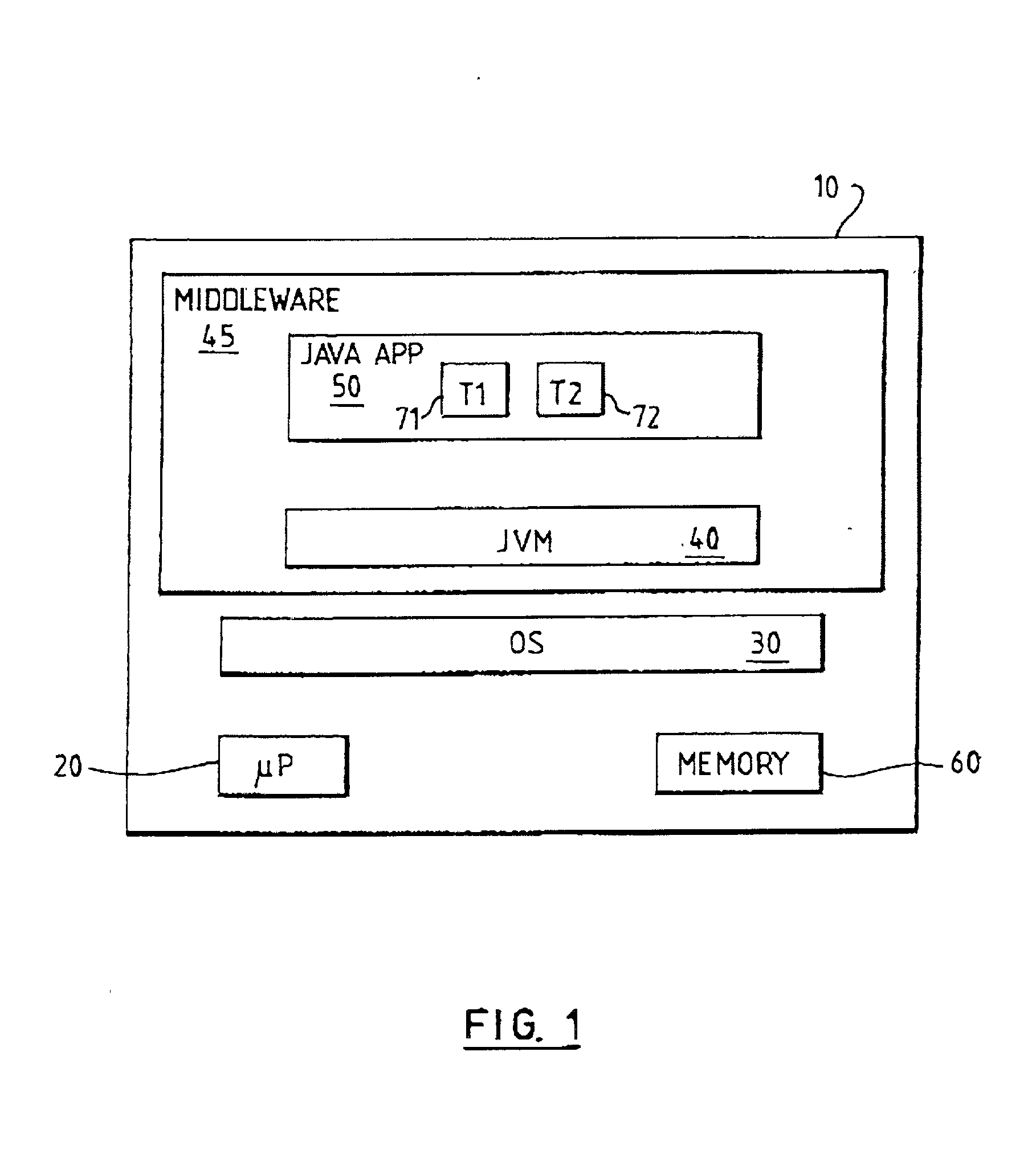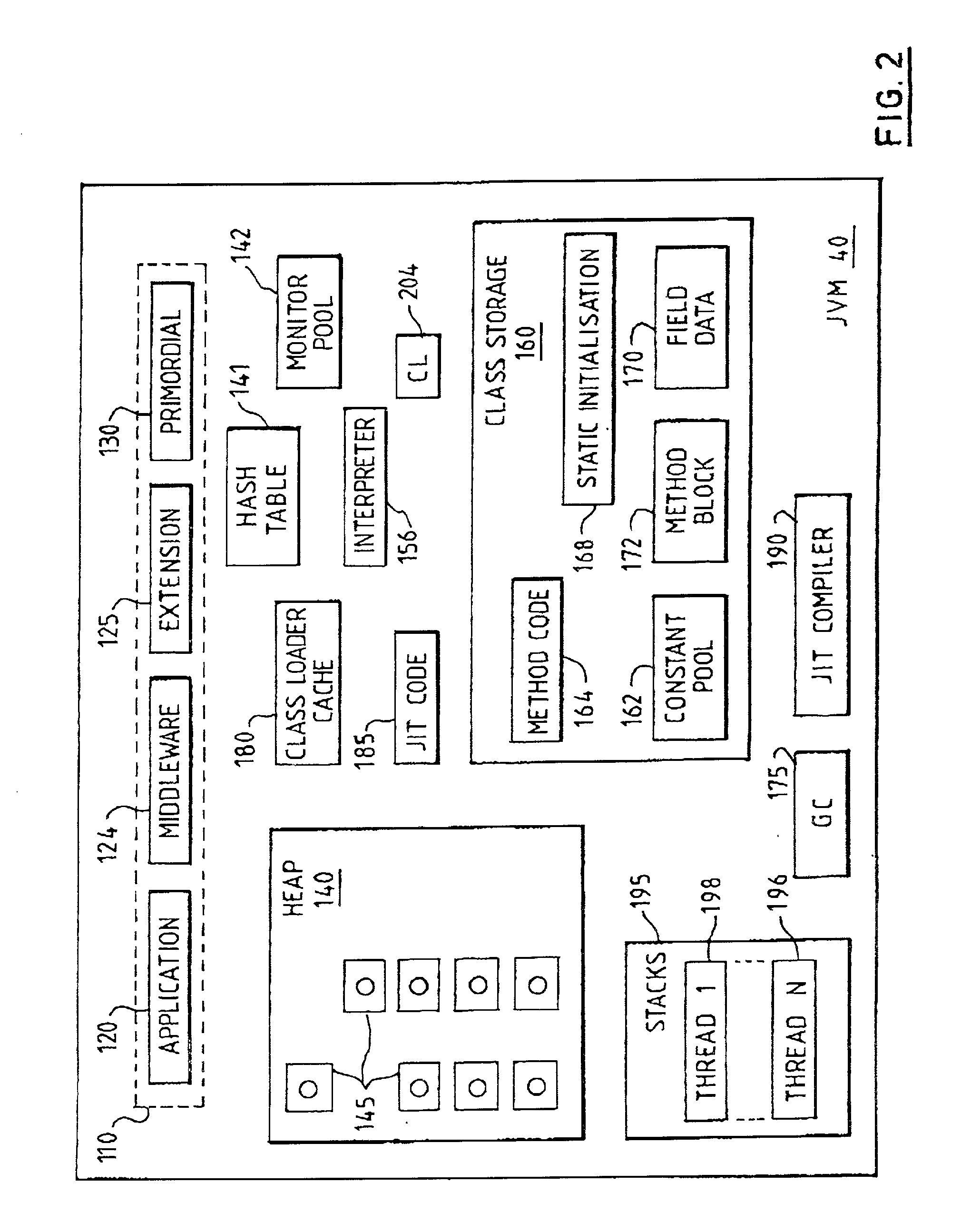System and method for class loader constraint checking
- Summary
- Abstract
- Description
- Claims
- Application Information
AI Technical Summary
Benefits of technology
Problems solved by technology
Method used
Image
Examples
Embodiment Construction
[0041] FIG. 1 illustrates a computer system 10 including a (micro)processor 20 which is used to run software loaded into memory 60. The software can be loaded into the memory by various means (not shown), for example from a removable storage device such as a floppy disk, CD ROM, or DVD, or over a network such as a local area network (LAN), telephone / modem connection, or wireless link, typically via a hard disk drive (also not shown). Computer system runs an operating system (OS) 30, on top of which is provided a Java virtual machine (JVM) 40. The JVM looks like an application to the (native) OS 30, but in fact functions itself as a virtual operating system, supporting Java application 50. A Java application may include multiple threads, illustrated by threads T1 and T2 71, 72.
[0042] System 10 also supports middleware subsystem 45, for example a transaction processing environment such as CICS, available from IBM Corporation (CICS is a trademark of IBM Corporation). The middleware sub...
PUM
 Login to View More
Login to View More Abstract
Description
Claims
Application Information
 Login to View More
Login to View More - R&D
- Intellectual Property
- Life Sciences
- Materials
- Tech Scout
- Unparalleled Data Quality
- Higher Quality Content
- 60% Fewer Hallucinations
Browse by: Latest US Patents, China's latest patents, Technical Efficacy Thesaurus, Application Domain, Technology Topic, Popular Technical Reports.
© 2025 PatSnap. All rights reserved.Legal|Privacy policy|Modern Slavery Act Transparency Statement|Sitemap|About US| Contact US: help@patsnap.com



